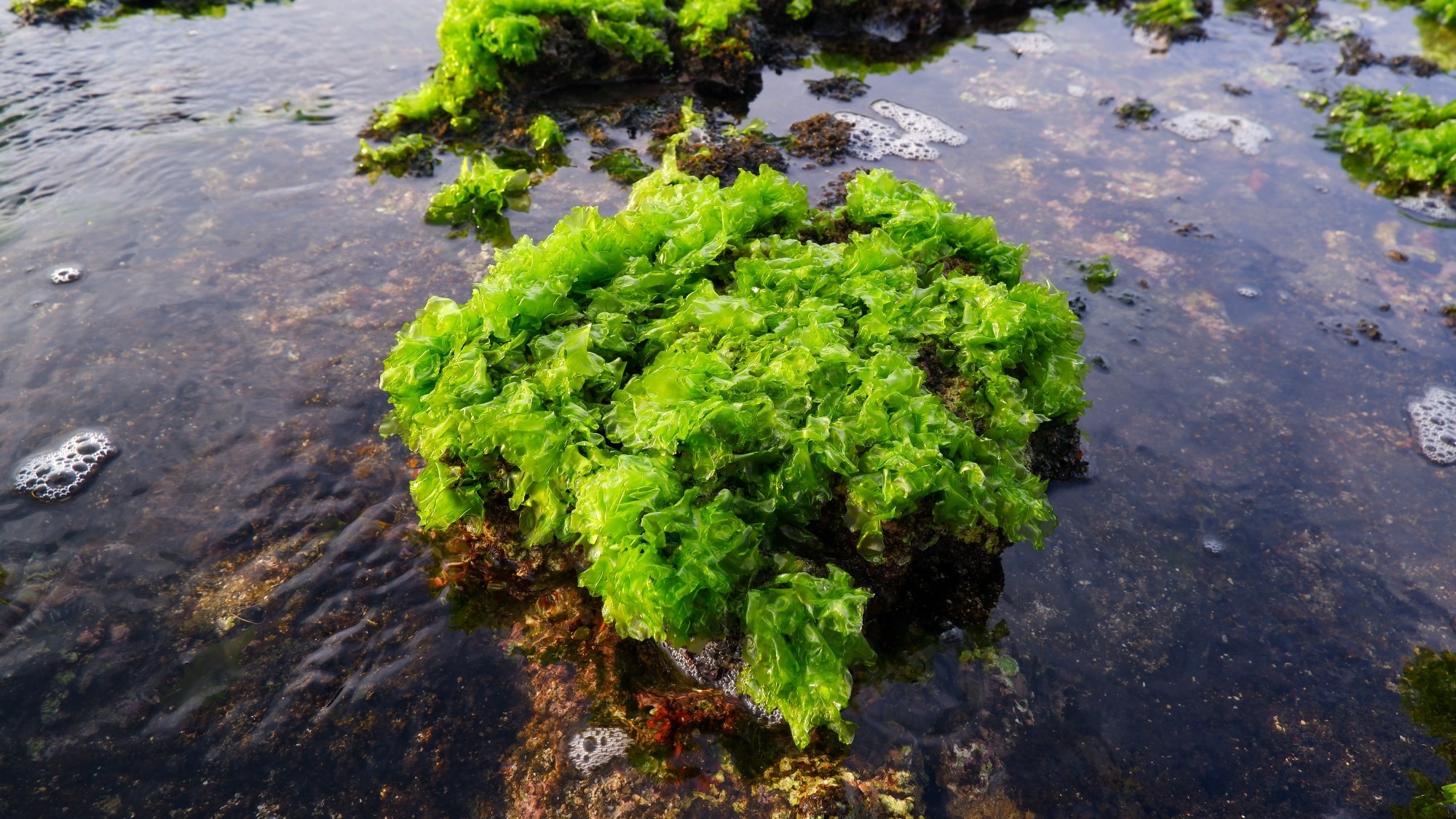Seaweeds are macroalgae, colonizing brackish water bodies and seas, and are classified into brown, green, and red algae. Research suggests that seaweeds are enriched with bioactive compounds with therapeutic potential. Seaweeds are also good sources of nutrients, antioxidants, and dietary fiber and have a low caloric value.
Ulva lactuca, a green alga, is a source of carotenoids, ulvan (a polysaccharide), proteins, minerals, vitamin C, and dietary fibers. In the present study, the authors discussed the chemistry and applications of bioactive compounds of green seaweeds, mainly focusing on U. lactuca and emphasizing its application as a superfood.
 Review article: The sea lettuce Ulva sensu lato: Future food with health-promoting bioactive. Image Credit: f.maliki / Shutterstock
Review article: The sea lettuce Ulva sensu lato: Future food with health-promoting bioactive. Image Credit: f.maliki / Shutterstock
Green seaweeds and their applications
Some green algae are used as food for humans, feed for fish, and as fertilizers. South-East Asians have been consuming seaweed as vegetables for centuries. Seaweeds are used as additives in Western diets, and their consumption has increased over time due to their health benefits.
Further, seaweeds are explored for biofuel production, nutraceuticals, and supplements. Dietary seaweeds can help in digestion, weight loss, and thyroid function. Glycans and ulvans are highly sulfated polymers from green seaweeds and are studied for food and biomedical applications. One study revealed that consuming seaweed reduced suicide risk in adults, while others showed it helped manage diabetes mellitus and goiter.
U. lactuca belongs to the Ulvaceae family of the Chlorophyta phylum and is also called green laver/sea lettuce. It is an excellent dietary fiber source, with over 16% water-soluble and 13% insoluble fiber; it is rich in amino acids and contains up to 36 times more iodine and iron than terrestrial plants.
Nonetheless, sea lettuce is deemed a relatively unexploited marine plant resource. Ulvan has antioxidant, antiviral, anticancer, anti-inflammatory, and antibacterial properties. Studies suggest that geographical, seasonal, physiological, and environmental factors influence the nutritional composition of U. lactuca.
Ulvan from this seaweed comprises carbohydrates, uronic acids, sulfate groups, and ash. Moreover, one study revealed decreased levels of serum cholesterol, triglycerides, low-density lipopolysaccharide (LDL), and very-LDL (VLDL) in mice treated with ulvan. Further, ulvan has been shown to modulate cellular signaling in animals and plants.
Food products and regulations
The demand for seaweed-based food products has been growing lately. U. lactuca has satisfactory functional properties similar to terrestrial lettuce and additionally possesses swelling, oil-holding, and water-holding properties. A few studies demonstrated the application of sea lettuce in value-added food preparations, such as yogurt, juices, wine, soup, sandwiches, and extruded snacks. Extrusion cooking is described as a method of producing snacks that meet the dietary requirements of specific populations.
One study reported developing extruded snacks fortified with U. lactuca. In addition, nutritious biscuits and protein-rich food bars incorporated with U. lactuca have also been developed. Synbiotic yogurt was developed using ulvan as the prebiotic ingredient and probiotic starter bacteria. Furthermore, U. lactuca has been used to develop bread, gel desserts, and instant vegetable soup.
Several regulations have been introduced for seaweed consumption in different countries. Edible seaweed species approved by the European Union (EU) include Palmaria palmata, Gracilariopsis longissimi, Himanthalia elongate, Fucus serratus, F. vesiculosus, Ulva spp., and Ascophyllum nodosum.
Concluding remarks
Besides bioactive compounds, undesirable heavy metals such as lead, cadmium, manganese, rubidium, copper, tin, arsenic, and aluminum have been found in seaweeds, including in sea lettuce. Therefore, the accumulation of heavy metals is a significant concern for seaweed consumption.
Seaweeds are considered superfoods as they contain high amounts of bioactive molecules and nutrients with health-promoting benefits. U. lactuca contains many such compounds, including dietary fiber, sulfated polysaccharides, phytochemicals, proteins, and polyunsaturated fatty acids. Including green seaweeds in the diet can help mitigate the risk of lifestyle-related non-communicable diseases.
Sea lettuce has been used to produce many value-added products. However, their utilization as nutraceuticals and the development/commercialization of new products have yet to happen globally. Further investigations and seaweed cultivation technologies are needed to efficiently recover health-promoting compounds.